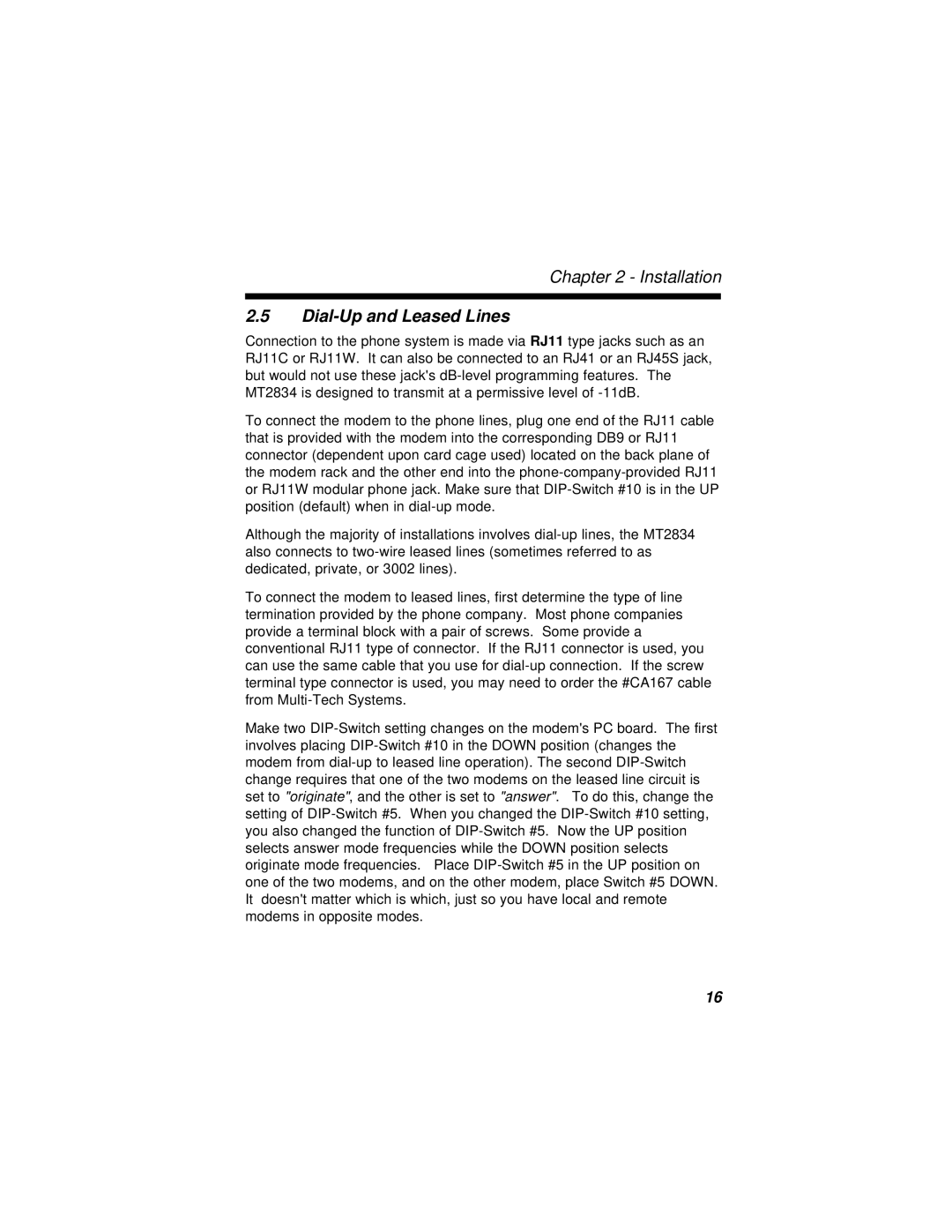
Chapter 2 - Installation
2.5Dial-Up and Leased Lines
Connection to the phone system is made via RJ11 type jacks such as an RJ11C or RJ11W. It can also be connected to an RJ41 or an RJ45S jack, but would not use these jack's dB-level programming features. The MT2834 is designed to transmit at a permissive level of -11dB.
To connect the modem to the phone lines, plug one end of the RJ11 cable that is provided with the modem into the corresponding DB9 or RJ11 connector (dependent upon card cage used) located on the back plane of the modem rack and the other end into the phone-company-provided RJ11 or RJ11W modular phone jack. Make sure that DIP-Switch #10 is in the UP position (default) when in dial-up mode.
Although the majority of installations involves dial-up lines, the MT2834 also connects to two-wire leased lines (sometimes referred to as dedicated, private, or 3002 lines).
To connect the modem to leased lines, first determine the type of line termination provided by the phone company. Most phone companies provide a terminal block with a pair of screws. Some provide a conventional RJ11 type of connector. If the RJ11 connector is used, you can use the same cable that you use for dial-up connection. If the screw terminal type connector is used, you may need to order the #CA167 cable from Multi-Tech Systems.
Make two DIP-Switch setting changes on the modem's PC board. The first involves placing DIP-Switch #10 in the DOWN position (changes the modem from dial-up to leased line operation). The second DIP-Switch change requires that one of the two modems on the leased line circuit is set to "originate", and the other is set to "answer". To do this, change the setting of DIP-Switch #5. When you changed the DIP-Switch #10 setting, you also changed the function of DIP-Switch #5. Now the UP position selects answer mode frequencies while the DOWN position selects originate mode frequencies. Place DIP-Switch #5 in the UP position on one of the two modems, and on the other modem, place Switch #5 DOWN. It doesn't matter which is which, just so you have local and remote modems in opposite modes.
